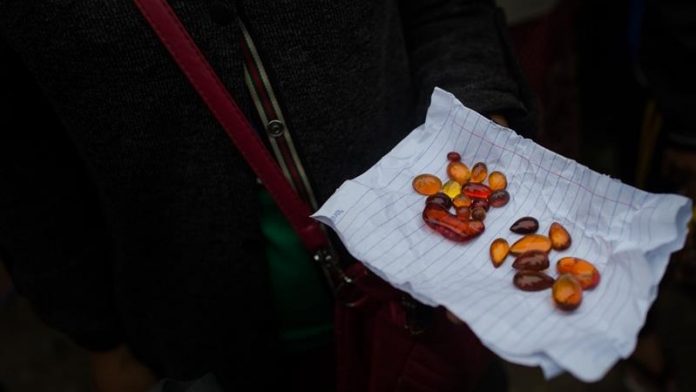The oldest known examples of fossilised animal sperm were previously a mere 17 million years old, according to the team of experts led by Wang He of the Chinese Academy of Science in Nanjing.
The sperm were found inside an ostracod, a kind of crustacean that has existed for 500 million years and can be found in many oceans today, researchers said in a paper published on Wednesday in the prestigious Royal Society’s Proceedings journal.
They were found in the body of a female specimen, indicating that she must have been fertilised shortly before being trapped in the tree resin, the experts said.
To make the find even more special, the sperm were also described as “giants”, measuring up to 4.6 times the size of the body of the male.
“This is equivalent to about 7.30 metres in a 1.70-metre human, so it requires a lot of energy to produce them,” Renate Matzke-Karasz of the Ludwig Maximilian University of Munich, co-author of the study, told AFP.
The ostracod was also a new species that the scientists have named “Myanmarcypris hui”.
Quality over quantity
Fossilised shells of ostracods are common, but finding a specimen with “soft parts” is rare, the experts said.
During the Cretaceous period (around 145 to 66 million years ago), the ostracods in question probably lived in the coastal waters of present-day Myanmar, where they became trapped in a blob of tree resin.
Most males in the animal world (including humans) generally produce tens of millions of tiny sperm cells, but for ostracods, it’s all about quality over quantity.
There are several conflicting theories about the evolutionary value of such giant sperms.
“For example, experiments have shown that in one group, a high degree of competition between males can lead to a longer sperm life, while in another group, a low degree of competition also led to a longer sperm life,” said Matzke-Karasz.
This discovery shows “that reproduction with giant sperm is not an evolutionary extravagance on the brink of extinction, but a serious long-term advantage for the survival of a species,” Matzke-Karasz concluded.
Source: AFP NEWS AGENCY







